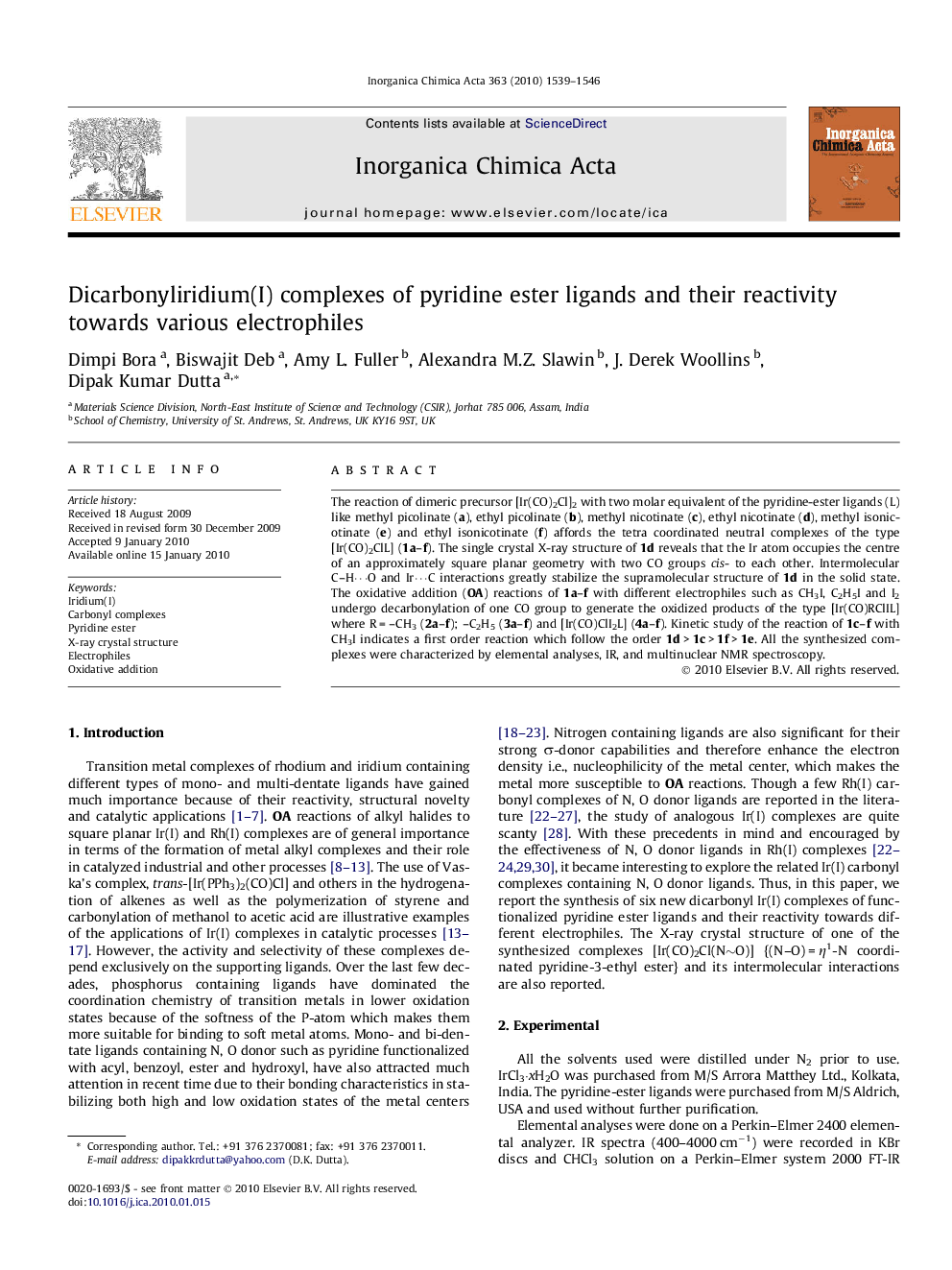| Article ID | Journal | Published Year | Pages | File Type |
|---|---|---|---|---|
| 1309204 | Inorganica Chimica Acta | 2010 | 8 Pages |
The reaction of dimeric precursor [Ir(CO)2Cl]2 with two molar equivalent of the pyridine-ester ligands (L) like methyl picolinate (a), ethyl picolinate (b), methyl nicotinate (c), ethyl nicotinate (d), methyl isonicotinate (e) and ethyl isonicotinate (f) affords the tetra coordinated neutral complexes of the type [Ir(CO)2ClL] (1a–f). The single crystal X-ray structure of 1d reveals that the Ir atom occupies the centre of an approximately square planar geometry with two CO groups cis- to each other. Intermolecular C–H⋯O and Ir⋯C interactions greatly stabilize the supramolecular structure of 1d in the solid state. The oxidative addition (OA) reactions of 1a–f with different electrophiles such as CH3I, C2H5I and I2 undergo decarbonylation of one CO group to generate the oxidized products of the type [Ir(CO)RClIL] where R = –CH3 (2a–f); –C2H5 (3a–f) and [Ir(CO)ClI2L] (4a–f). Kinetic study of the reaction of 1c–f with CH3I indicates a first order reaction which follow the order 1d > 1c > 1f > 1e. All the synthesized complexes were characterized by elemental analyses, IR, and multinuclear NMR spectroscopy.
Graphical abstractA series of iridium(I) complexes of the type [Ir(CO)2ClL] (L = methylpicolinate, ethylpicolinate, methylnicotinate, ethylnicotinate, methylisonicotinate and ethylisonicotinate) were synthesized and their reactivity was evaluated towards different electrophiles. The X-ray crystal structure of [Ir(CO)2Cl(ethylnicotinate)] was determined and exhibits a three dimensional supramolecular assembly developed by a series of helical chains interlinked through C–H⋯O and Ir⋯C intermolecular interactions.Figure optionsDownload full-size imageDownload as PowerPoint slide
